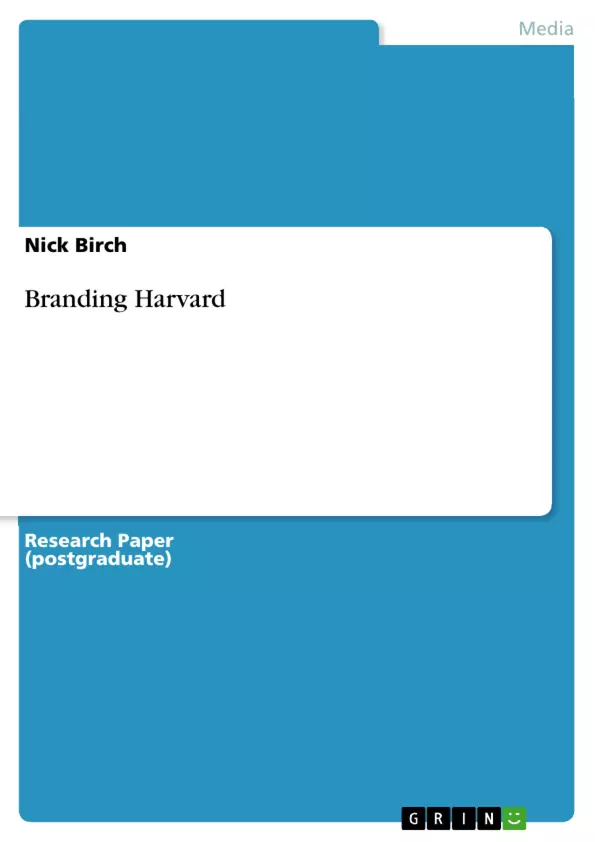There are nearly 4,000 colleges and universities in the United States and almost all of these institutions have continued to attract enough students to remain operational year after year, according to Author and Marketing guru Roger Dooley (2013).
That’s about to change, and one of the key differences in who survives won’t be the academic output of the faculty or the amenities available to students. It will be a factor seemingly unrelated to the schools’ mission: branding.
(Dooley, 2013)
Nurko (2010) says that ‘branding is a vital tool for Universities to consider as they not only seek to attract the brightest students, but they also seek to attract and retain top academic faculty talent, become centres for research grants as well as attract investment funding and endowments to subsidize future growth’.
The days when Universities were simply hallowed halls of academia around the world are gone. Today, Universities are not only academic institutes but they are commercial organisations and engines of economic growth for their communities and shareholders. Universities compete for talent at both the student level, but also for faculty personnel and investment funding. Both private and public Universities are more accountable for their balance sheets, as well as for their level of academic rigour and reputation. In a world in which academia, commerce and government overlap, the role higher education plays has never been more critical – yet, at the same time more controversial. For this reason, Universities are deploying marketing and branding strategies and tactical executions which seek to help them differentiate while also compete for potential student attention, financial investment and ultimately reputation accolades.
(Nurko, 2010)
The current Harvard coat of arms certainly retains some complexity, but the question becomes - is the complexity meaningful?
Well, yes and no – but the fundamental design flaws do need to be addressed so that Harvard can retain some consistency across the board. Harvard University could definitely simplify its branding without compromising connections to its roots, but it is important to focus on the purposes for doing so.
Table of Contents
- Responding to Change
- Heralding History
- In Harvardina
Objectives and Key Themes
This text examines the changing landscape of higher education and explores the role of branding in university success. It focuses specifically on Harvard University, analyzing its historical branding and how it needs to adapt to meet the challenges of the modern educational environment.
- The evolving role of universities in the 21st century
- The impact of branding on university success
- The challenges posed by rising costs and declining benefits of higher education
- The need for universities to adapt their branding to the digital age
- The historical significance of Harvard's branding and its evolution over time
Chapter Summaries
The first chapter explores the changing landscape of higher education, highlighting the challenges of rising costs and declining benefits. It argues that universities need to adopt a more strategic approach to branding to remain competitive in a rapidly evolving market. The second chapter delves into the history of Harvard University's branding, tracing its origins to the institution's founding principles and exploring the evolution of its visual identity over time. This section examines the historical significance of the Harvard shield and crest and its connection to the university's early focus on Christian education.
Keywords
Higher education, branding, Harvard University, university reputation, digital age, historical branding, Christian education, visual identity, university marketing, higher education affordability, declining benefits of higher education.
- Citation du texte
- Nick Birch (Auteur), 2014, Branding Harvard, Munich, GRIN Verlag, https://www.grin.com/document/274460



